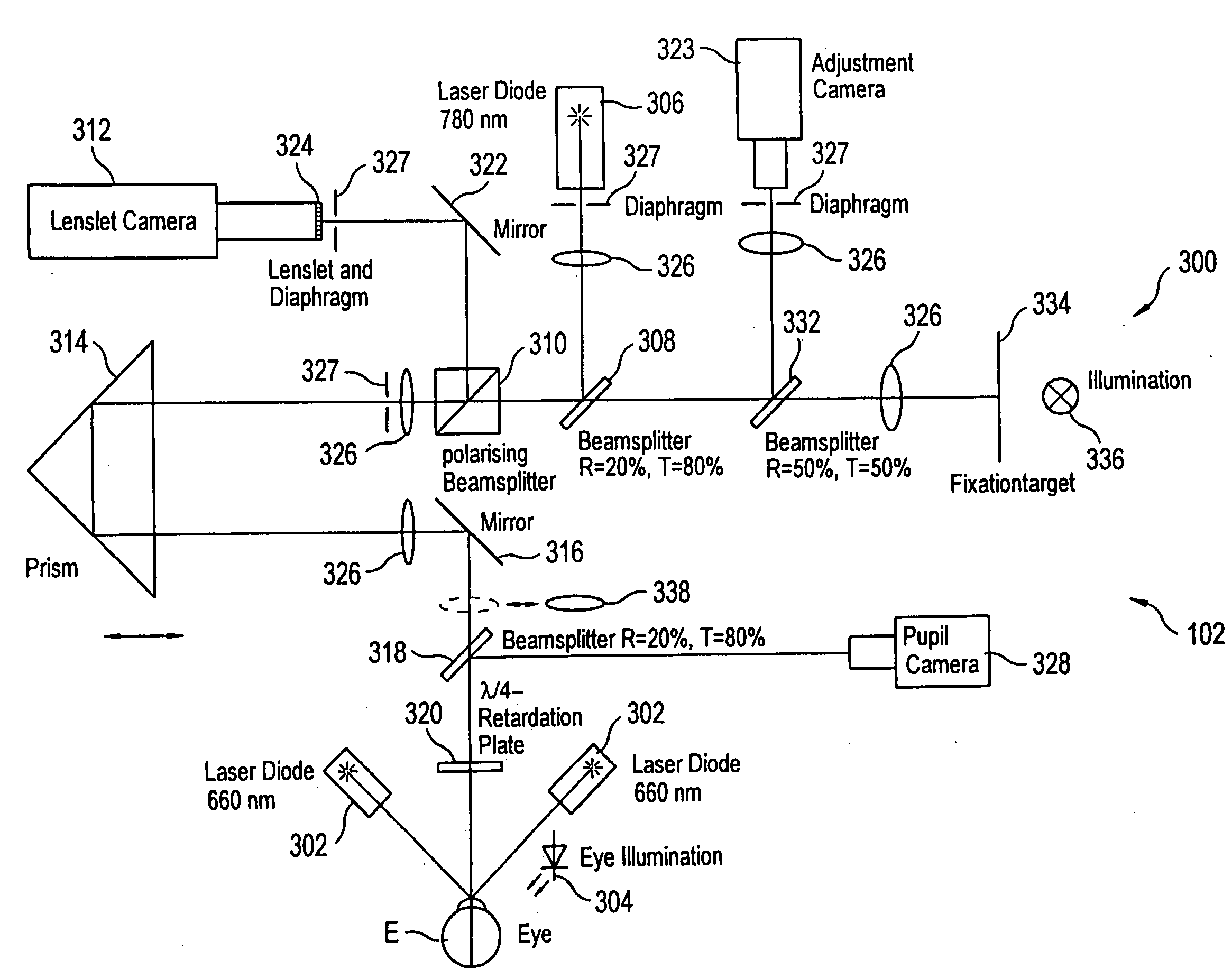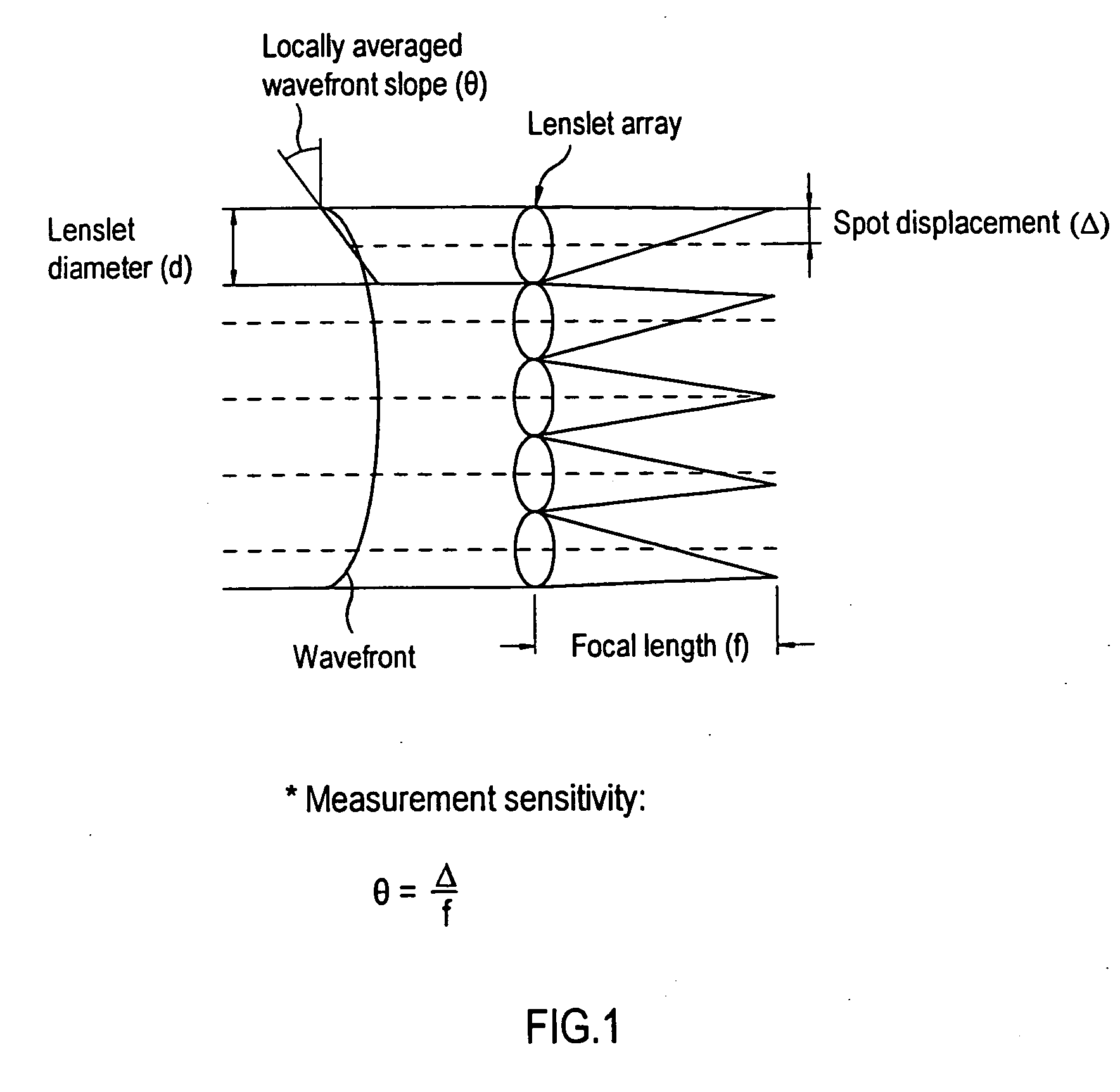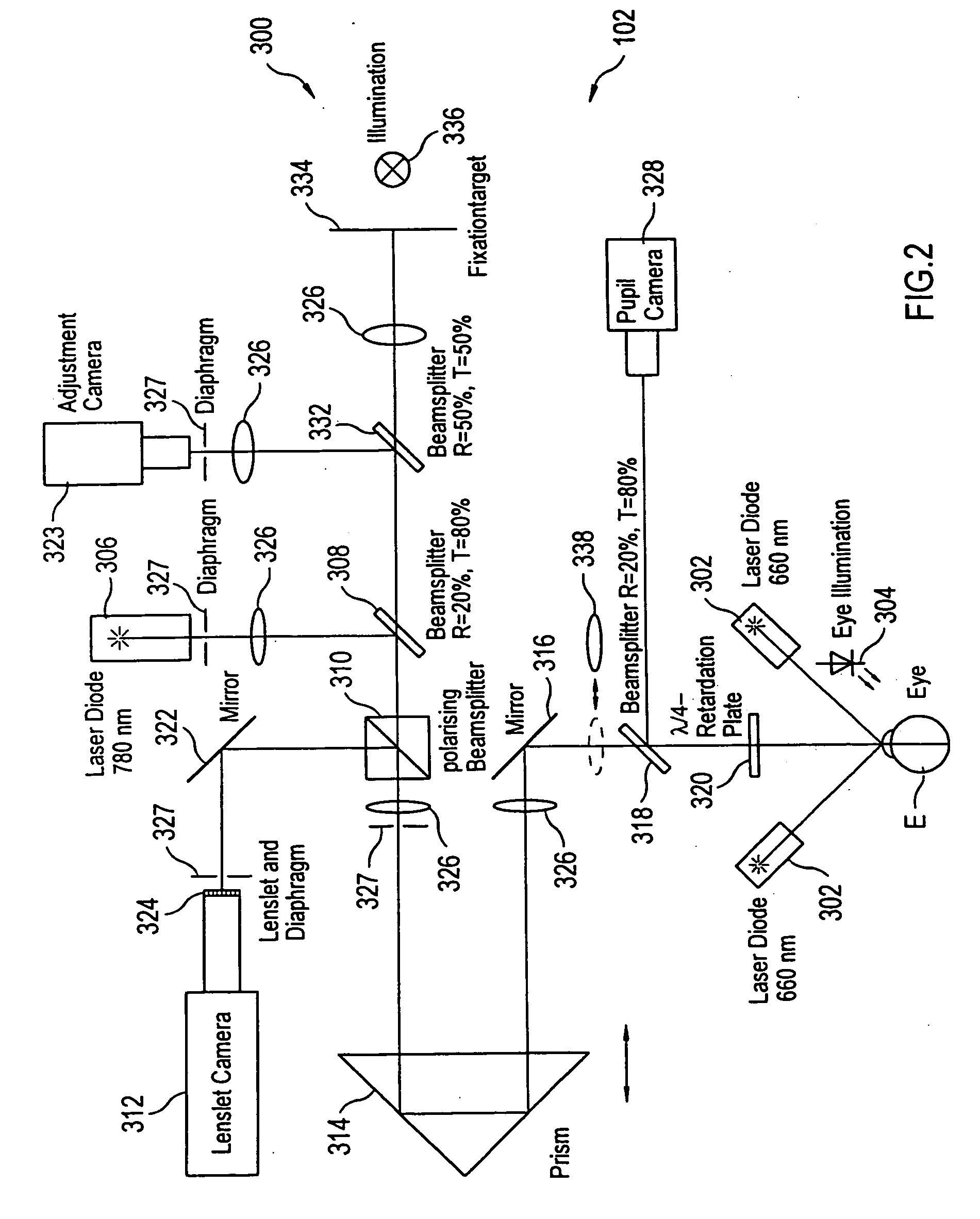Wavefront sensor having multi-power beam modes, independent adjustment camera, and accommodation range measurement
a wavefront sensor and beam mode technology, applied in the field of ophthalmic wavefront aberration diagnostic tools, can solve problems such as damage to the retina, and achieve the effect of improving the initial focus and precision of light, and improving the wavefront sensor
- Summary
- Abstract
- Description
- Claims
- Application Information
AI Technical Summary
Benefits of technology
Problems solved by technology
Method used
Image
Examples
Embodiment Construction
[0029] Turning to FIG. 2, a block diagram of a wavefront sensor 300 (Aberrometer™) is illustrated, which is a preferred implementation of this invention. The wavefront sensor 300 is similar in concept to the wavefront sensor of Williams, but includes certain features that make it especially useful for receiving iris data and for sharpening the focus of light spots on a sensor used in determining the wavefront aberrations of the eye. Further, a number of the features find general applicability to wavefront measurement devices, including those other than Williams. Such devices include scanning devices that do not have a lenslet array and multiple beam devices, e.g. Tscherning aberrometers and ray tracing aberrometers. In general, the wavefront sensor 300 focuses or scans a light (typically a laser) on the retina of an eye and then analyzes the light returned (i.e., backscattered from the retina) through the lens and corneal optics of the eye and imaged to and focused by a lenslet arra...
PUM
 Login to View More
Login to View More Abstract
Description
Claims
Application Information
 Login to View More
Login to View More - R&D
- Intellectual Property
- Life Sciences
- Materials
- Tech Scout
- Unparalleled Data Quality
- Higher Quality Content
- 60% Fewer Hallucinations
Browse by: Latest US Patents, China's latest patents, Technical Efficacy Thesaurus, Application Domain, Technology Topic, Popular Technical Reports.
© 2025 PatSnap. All rights reserved.Legal|Privacy policy|Modern Slavery Act Transparency Statement|Sitemap|About US| Contact US: help@patsnap.com



